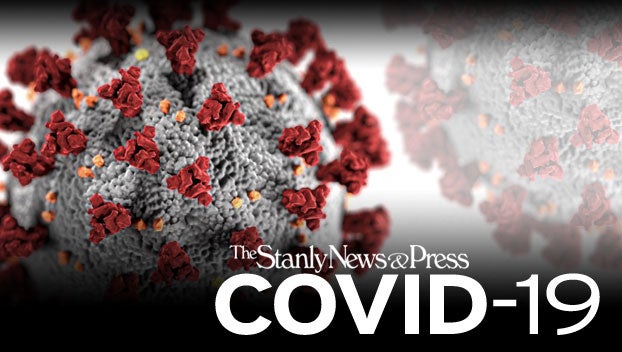Roughly 10 percent of Stanly residents have received first COVID vaccination
Published 3:05 pm Tuesday, February 9, 2021
|
Getting your Trinity Audio player ready...
|
Almost 10 percent of Stanly County residents have received the first dose of the coronavirus vaccine, according to state Department of Health and Human Services data released this week.
This is on par with state levels (9.9 percent of people across North Carolina have received first doses) and ahead of many neighboring counties — Cabarrus (7.6 percent), Union (7.5 percent), Mecklenburg (7.3 percent) and Rowan (6.7 percent).
An additional 2 percent of people in the county have received the second vaccine dose.
The overwhelming majority of people vaccinated in Stanly are white, according to state Department of Health and Human Services data released this week that provided a race and ethnicity breakdown for the first time at the county level.
An estimated 90 percent of people in the county given first doses are white, suggesting that this demographic in Stanly is being overrepresented, since the group comprises 84 percent of the county population, according to U.S. Census estimates.
Roughly 10 percent of the white population in the county has received the first dose.
Unlike in other counties, where the data shows how many Black, Asian and American Indian populations of people have been vaccinated, in Stanly those details are not provided. Almost 9 percent of people in Stanly who have been vaccinated are not identified, only labeled “suppressed,” while less than 1 percent of people labeled “other” have been vaccinated.
The most likely reason why other racial groups are not included in Stanly is because not enough of them have been vaccinated. In explaining its methodology on its online dashboard, NCDHHS wrote that “when a county has a population of fewer than 500 individuals for a specific demographic group, some data are suppressed to protect patient privacy.”
Less than 1 percent of people given first doses of the COVID-19 vaccines in the county have been Hispanic. That’s a big disparity compared to the county’s demographics, which show nearly 4 percent of people in Stanly are Hispanic, according to U.S. Census Bureau estimates.
At the state level, white people are also getting the majority of COVID-19 vaccines, NCDHHS data show.
They have received almost 80 percent of first doses, though they account for only 71 percent of the population. In contrast, almost 14 percent of Black people have been given first doses, though they comprise 22 percent of the total population, while only 2 percent of Hispanics have been vaccinated, while they comprise 10 percent of the population.
In order to ensure communities of color have reliable access to vaccines, NCDHHS is sending additional doses to counties with larger historically marginalized populations and larger populations over 65.
“The percentage of vaccine administered to historically marginalized and minority populations should meet or exceed the population estimates of these communities in their county and region,” NCDHHS secretary Dr. Mandy Cohen wrote in a letter to vaccine providers last month.
The health department is working with the Stanly County Minority Health Council to help spread the word about the need for people of color to get vaccinated. To help address the population, Atrium Health hosted a drive-through vaccine clinic at Saints Delight Church in South Albemarle last week. The second dose clinic will be from 8 a.m.-2:30 p.m. March 3.
Garry Lewis, chairman of the Minority Health Council, spoke to county commissioners and provided them a list of some community church organizations that were interested in helping host vaccine clinics.
“There is so much that needs to be done to educate and encourage all aspects of our community and this will take time,” Lewis told The Stanly News & Press.
During a press conference Tuesday, Cohen said 18 percent of vaccines administered in the state last week went to Black residents, up from 11 percent administered the week of Jan. 13.
Cohen said Atrium Health’s mobile unit has provided vaccines to more than 1,800 people, of whom 61 percent were Black and 10 percent were Hispanic. The mobile units will be deployed to rural counties, including Stanly, this week, she said.
Gov. Roy Cooper announced this week that beginning Feb. 24, teachers, child care employees and school support staff would be eligible for the COVID-19 vaccine.





